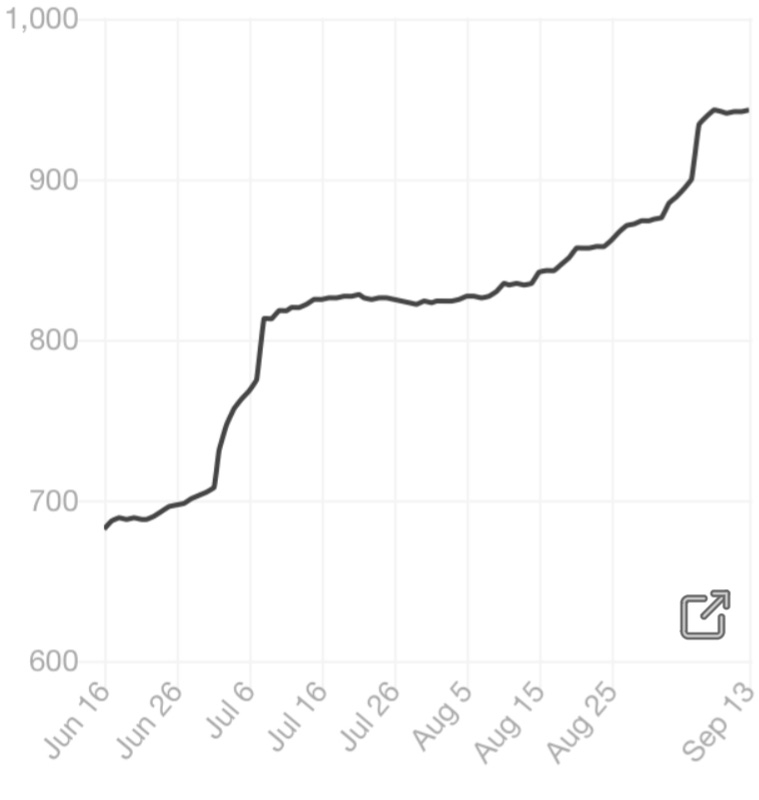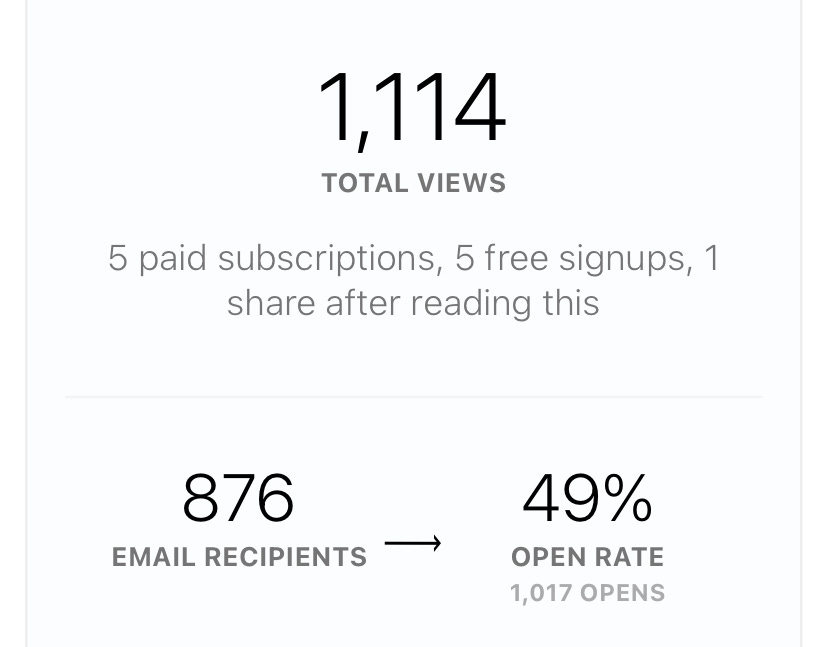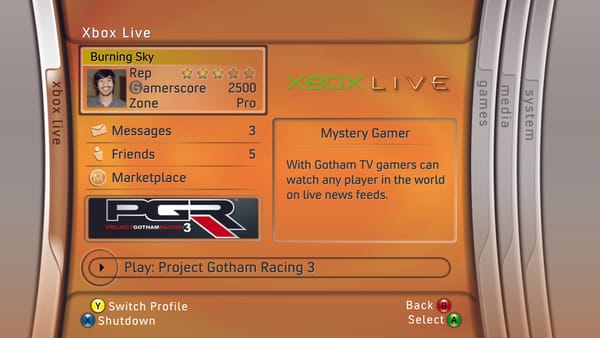#50: Where it's at
Hit Points is fifty! Heavens above. It’s now a little over three months since I first unveiled it to the world, and with a nice round number giving me a milestone worth marking, I thought I’d use today’s installment to talk about how it’s going, how I feel about it, and my plans for Hit Points’ future. Just as well, really, as there’s not a lot going on out there today.
A warning: this is the longest thing I’ve written for Hit Points. It is not about news (though I’ve stuck a MORE! section in at the end for tradition’s sake) and has lots of things about, like, data, and the future, and the emotions of a 40-something man. If you can’t be arsed with it I understand entirely and bear you no ill will. But newsletters, despite their age, are still a bit of a Wild West, and I thought perhaps some of you might be interested in a little peek behind the curtain. Some of you are funding it, after all. To those of you sticking around, let’s go!
HOW IT STARTED
My initial expectations for Hit Points were modest. The real success stories on Substack are written, by and large, by people with large pre-existing followings. There is no discovery process to speak of; no algorithm that, if treated correctly, will boost your profile. There is no best-practice guide that, if followed, will bring you success. But if you have 100,000 Twitter followers you’re probably going to do pretty well out of it. I, with a modest following of a couple of thousand, and having spent my career working in the pleasingly anonymous shadows of Edge, was never going to find myself making £100k overnight.
That said, the start was great. I got 500 signups within 24 hours, and sailed past 600 a day or so later. The beginning was always going to be the easy bit: the only way from zero is up, after all. I was braced for a grind thereafter, and a grind I have surely had. Behold the Hit Points Happiness Index, showing email list growth over the last 90 days:

There have been a few drop-offs along the way, all expected and understandable. I lost a few paying subs when I switched from writing every weekday to just Monday, Wednesday and Friday. I get one or two people leaving the email list every week, I assume because they’ve realised they don’t need more email in their lives; I both understand and sympathise with that. But the broad trend is steadily upward, and the last couple of weeks have been very encouraging. I am, on the whole, delighted.
HOW IT’S GOING
At the time of writing, Hit Points has 943 readers, and 55 paying subscribers. This is small potatoes by the standards of the modern internet, where numbers only start to matter when they hit the millions. But I think this is remarkable, in a number of ways. And when I dig a little deeper into the data, I see even more reasons to be optimistic.
Firstly, and most obviously, I began at zero, and am working alone. I started with nothing, on a platform that has no discovery process and cannot be in any way optimised or gamed, and three months later I am writing for almost a thousand people — not because of a certain game or topic or interview, but because they like what I write. That’s great!
The paid-sub figure looks low, but is a conversion rate of a little over 5%, which Substack reckons is pretty good (the highest band it talks about is ‘over 10%’). And we must note that, right now, there are no benefits to being a paid subscriber. Around one in every 20 readers think a thrice-weekly email in which I witter on about the game industry is worth paying money for, even though they can get it for free. That’s amazing!
Early on, most of the interest was from people I knew. I could look at a signup or a subscription and go, right, this person follows me on Twitter, or posts on the same forum as me, or is a former colleague or industry pal. Increasingly, however, I have no idea who my new readers are. And when I get a new paid subscriber these days, it’s typically someone who’s been on the free list for a while. They are not paying because we’re friends or colleagues. They are paying for the work, because the work has convinced them it is worth paying for. That is a wonderful feeling.
My email open rate is typically 45-50%. This is really quite good (the highest band Substack talks about is ‘over 50%’). But a lot of you are opening each edition multiple times. Some of you are opening it a lot — seven, eight times a pop, though apparently Substack counts an email forward as an ‘open’. Every day, I get a higher number of views than the number of people I send emails to, even though only around half the folks on my list are opening it. This was very weird to me at first! I think I understand it now, though. Here’s the post I wrote about China a couple of weeks back as an example:

Lovely!
Look, it’s early days. Am I making a living wage? Absolutely not. Like really not. I’m making, as of last Friday, $3,721 a year, which is barely enough to keep me in cardigans. But I see nothing here that makes me want to jack it in. I love the work, people are responding to it really well, and the data is all positive. Besides, quite a lot of you have paid up for a full year. I’m not going anywhere.
I would like it to grow some more though, sure. The road to the first 1,000 readers has been slow and steady. How do I make sure the second thousand readers, and the next hundred signups, arrive a little quicker? Enter what I suppose we shall call Hit Points: Phase Two. (Working tagline: ‘this time it’s pointier’.)
WHAT’S NEXT
Lately I’ve tried, once a week, to make a harder sell for paid subscriptions. It works, I think, but I don’t want to overdo it. As I have often pointed out, a newsletter offers an escape route from the unpleasant bits of today’s web experience. One of those is, obviously, advertising — and that includes, awkward though it is for my bank balance, advertising myself.
More precisely, I want to avoid as far as possible the commercial side of Hit Points, such as it has one, intruding on its editorial. I do not just want full control of what I write, but how I write as well. Some of the tactics I’ve seen employed elsewhere on Substack — subscription nudges after the first couple of paragraphs; preview newsletters that actually only contain half the copy, suddenly telling you that, if you want to read the rest, you have to subscribe — feel a bit grubby, a bit trad-internet, a bit unkind. I don’t want to do that; it would make writing Hit Points less enjoyable for me, and reading it less fun for you. A light touch is the way forward, I think.
The obvious next step is to make a paid subscription more attractive. It is time, after months of hints, to introduce subscriber-exclusive #content to Hit Points.
The free side of the newsletter looks at the latest developments in the game industry through my personal lens. I want the paid side to unhook Hit Points from the news cycle, and look at the industry in a different way — from the perspective of the people who work in it.
Paid content kicks off next month with a fortnightly interview series, talking to people in the game industry about their work. I want to get away from the traditional games-media approach of going, ‘What is this person making, and why should my readers care?’ and instead ask: ‘Who is this person, and what can we learn from them?’ I don’t want to find out about their products; I want to learn about them, and hopefully in the process deepen my and my readers’ understanding and appreciation of how games are made and sold and taught and all the rest of it. I want these to be fun and entertaining, but insightful and thought-provoking too. Now I think of it, that’s sort of the Hit Points mission statement.
We will start small, because I have no choice but to do so. If I went to a big publisher or platform-holder PR and said, ‘Hey, can I have an interview with your CEO? I have almost a thousand readers!’ I would, I expect, be laughed out of the room. I will therefore be leaning heavily on my industry pals at first, but that should help — a pre-existing relationship always makes for a better interview. Besides, some of my industry pals are pretty well known, and all of them are decent, smart, insightful people, all qualities I badly lack. Hit Points will be better for their inclusion.
This isn’t all that’s planned for paid subs: this is just the start. As with all this stuff, how it develops depends on the extent to which it succeeds. Which is where you come in.
HOW YOU CAN HELP
When a YouTuber urges you to like and subscribe and click the bell and all the rest of it, they are not just appealing for more viewers. They are also asking you to encourage the algorithm that runs the show to look more kindly upon them. That is not how Substack works. There is no algorithm here, no recommendations engine to optimise my work around. There is just you, dear readers, and me. When I ask you to share or subscribe, it’s because I am highly, almost entirely dependent on my current readership for growth — and the more of you there are, the greater the role you can play in helping Hit Points not just continue, but really succeed. In other words, I need your help.
Just as I see results when I push a little harder on paid subscriptions, so I see a direct relationship between reader shares and new signups. One day last week a reader replied to a Tweet asking for game-industry newsletter recommendations, and I got 40 new signups in 24 hours. Currently, most of my share traffic is on Twitter, which makes sense as that’s where most of my readership comes from. I appreciate all your efforts enormously. But now, as we enter phase two, I would like to ask that we try and cast a slightly wider net.
If you work in the game industry, a share on LinkedIn could be very valuable. So could forwarding Hit Points emails internally, or simply mentioning it in conversations where appropriate. If you’re part of a forum community, or a popular Discord or something, consider mentioning it there if an opportunity presents itself. Hit Points has, as far as I can tell, never been mentioned on ResetEra or Reddit, two potentially huge sources of new readers; I cannot do that myself because a) they have fairly strident self-promotion policies and b) I am terrified of them and they would probably eat me alive. Perhaps, where appropriate, you could do the honours.
When you do choose to talk about Hit Points, wherever it is, please link to it. Much as I love seeing people approvingly share screenshots or quotes from the latest edition — screenshots are particularly helpful, I think, and I encourage their use wholeheartedly — I would love it so much more if there was a link in there too.
IT’S OK I HAVE FINISHED NOW
I started Hit Points in part as an experiment: will people pay for words on the internet, written by someone with a negligible online following, in the year of our Lord 2021? I also did it because I missed writing, because there wasn’t enough of the sort of thing I liked writing on the internet, and as a kind of shop window for my consultancy business. I didn’t do it because I thought I could make six figures a year writing about videogames and doing dad jokes. And I still don’t, really. But I’ve seen enough in the first three months of Hit Points to make me think that, hey, this might actually be something I do for a long time, and that makes enough money for me to keep doing it. We are not there yet, no. But we are off, you and I, to a pretty good start. Let’s keep at it and see where it goes, hmm?
MORE!
- The first headlines after the Epic v Apple ruling came out on Friday focused on the judge instructing Apple to allow App Store developers to link out to external payment systems, presenting it as a win for Epic. But on all other counts, the ruling sides with Apple. Epic, refusing to take the L, has already appealed.
- Nintendo has dropped the price of the old-model Switch, ahead of the launch next month of the shiny new OLED model.
- Is the PS5 scalper fiasco coming to an end? Well, no, but prices on secondary markets have dropped by some 30%, which is progress of a sort. Series X prices are holding steady, apparently due to there having been fewer restocks of Microsoft’s console.
- Google Stadia’s Jack Buser is now Google Cloud’s Jack Buser, as the company’s shift from in-house game development to providing cloud-gaming services to thirdparty devs and publishers begins to take shape.
Sorry for writing so much. And on such a slow day! I am exhausted. Back to business as usual on Wednesday — catch you then.





